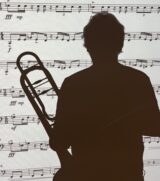I suspect like many, when the Covid lockdown hit, I experienced a noticeable change in our sonic environment. Opening my front door, on a bright sunny Spring morning, it became clear something was missing from our world – the sound of mechanisation. At that point, a slight obsession began, something that has stayed with me – the wish and enjoyment to capture sound worlds that are usually hidden or invisible to the eye or ear.
Whilst I’ve sporadically used field recordings in various projects over the past twenty years, using them entirely in complete works is a new departure. 600 Pieces of Landscape: Chalk Stream by Harry Cory Wright was a site-wide exhibition at Stapleford Granary formed from 600 small hand-painted wooden panels, all representing some aspect of the Granary’s chalk stream landscape through colour, shape and texture. My sound installation played continually in the Orchard Room. ‘Sound within Sound‘ is made up of two ecosystems: the familiar sounds of the chalk stream habitat (birds, wildlife) was heard on entry to the room, and the unfamiliar underwater acoustic of the chalk stream itself, generated by two hydrophones placed at the bottom of our stream, were heard inside the shed.
‘Early Morning Wren’ for One Island, Many Visions sculpture exhibition in Dorset is a collaboration between glassmaker Colin Reid, myself with acoustic consultation by Rob Phillips (UH Music). The glass sculpture ‘Early Morning Wren’ combines textures cast from Tout Quarry rocks with an image derived from an audio recording at dawn in the quarry. The sound is rendered as a spectrogram etched inside the glass, reflecting the ancient permanence of the rocks and the fleeting nature of lives lived there. A single visual representation of the location – the call of a wren – is captured as a sonogram and transferred to glass. The accompanying soundscape, uses the same location and source – the bird call representing transience in a place that is rooted in geological time, reflecting changes to the Anthropocene. Frozen in time, the wren sonogram allows us to explore the sound ‘out of time’, whilst the soundscape distorts our sense of time as it unfolds. Making use of sounds that may have been present in the quarry throughout history, we hear echoes of the past entwining human and naturally occurring phenomena.
Links to field recordings here:
